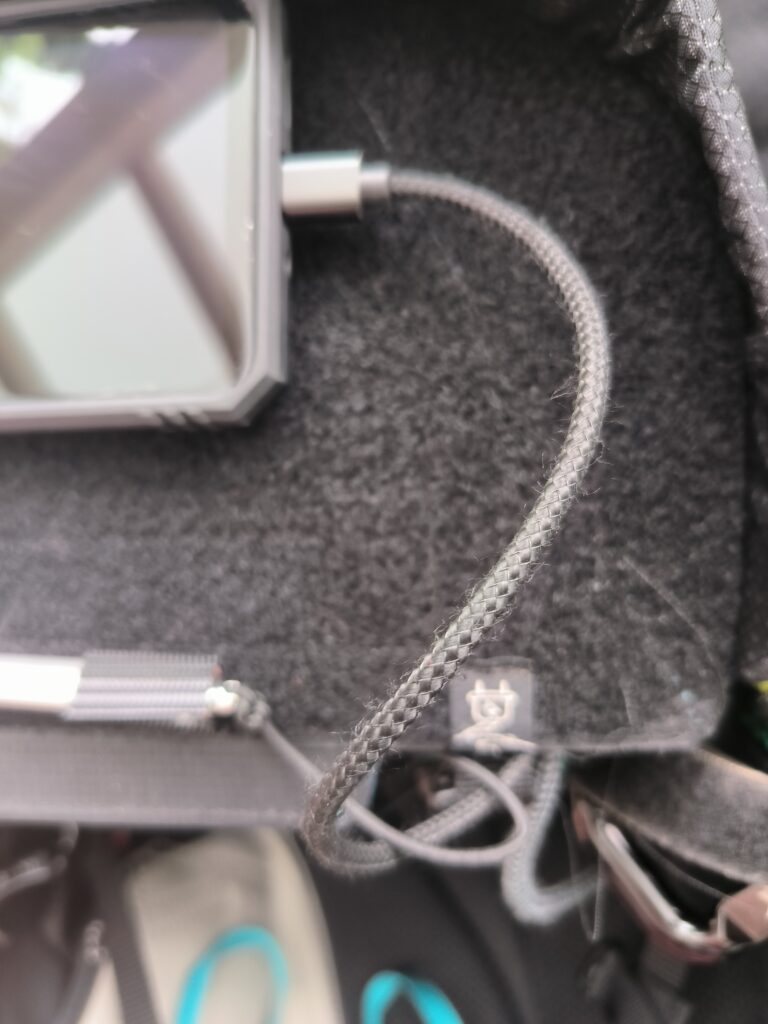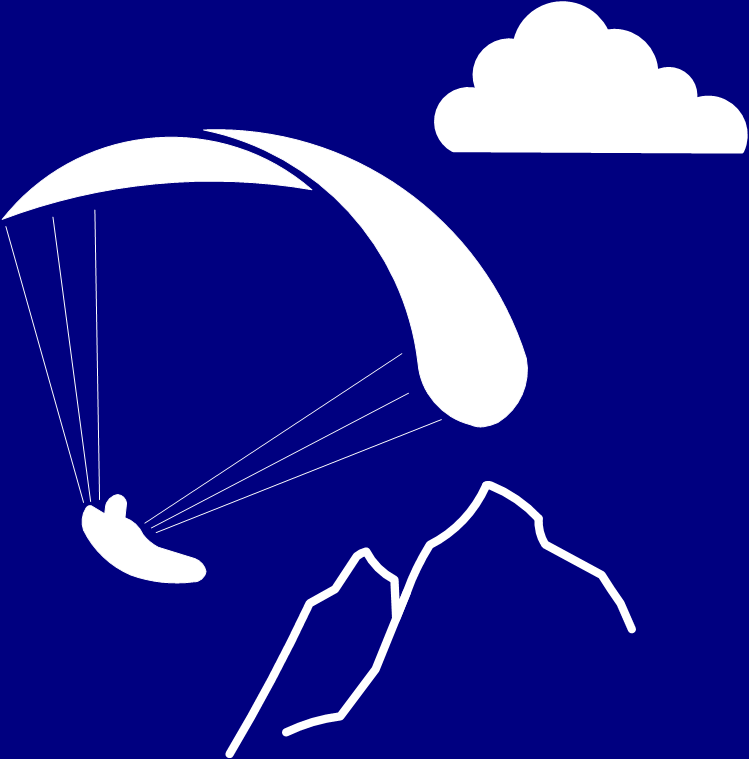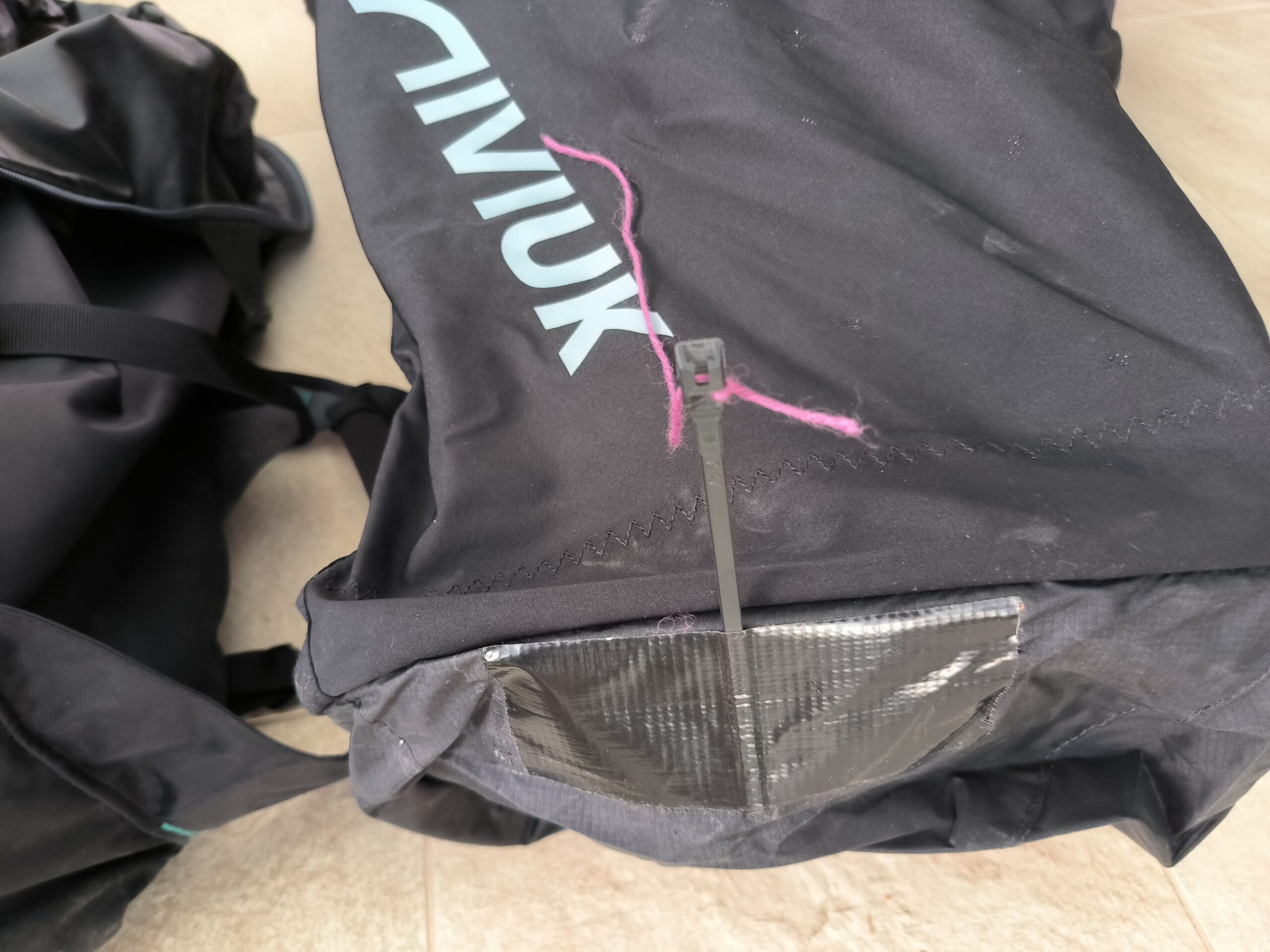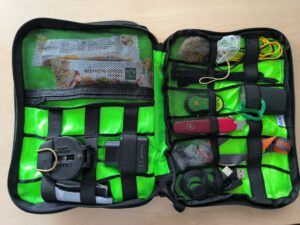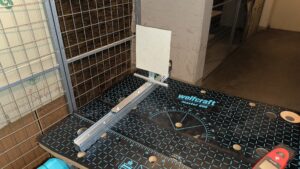After a long break, I would like to continue the series “Simple tips for everyday pilot life”. This time with checking the reclining harness setting, first aid kit and USB-C cable with fabric tape.
Checking the reclining harness setting
What is one of the most important instruments on a glider costing over €100,000? A short piece of string on the canopy, attached with a short piece of adhesive tape, costs less than a cent. The pilot uses it to recognise whether the glider is pushing, i.e. whether the fuselage is being pushed sideways. Of course, this costs performance. I have noticed that many paraglider pilots also give away performance due to an incorrectly adjusted hang glider harness. At practically every take-off site, you can see many recumbent harnesses with the leg bag pointing diagonally downwards. As a pilot, it is difficult to check this yourself as you don’t have an outside view. At home on the simulator, correct adjustment is only possible to a limited extent, as the harness has a higher resistance than the paraglider. A correctly adjusted harness on the simulator would therefore point diagonally downwards in flight. To check the setting, I attached a cable tie with armour tape to the tip of the leg bag, to which a short string is attached at the outer end. In flight, the string should be parallel to the lettering if the harness is correctly adjusted.
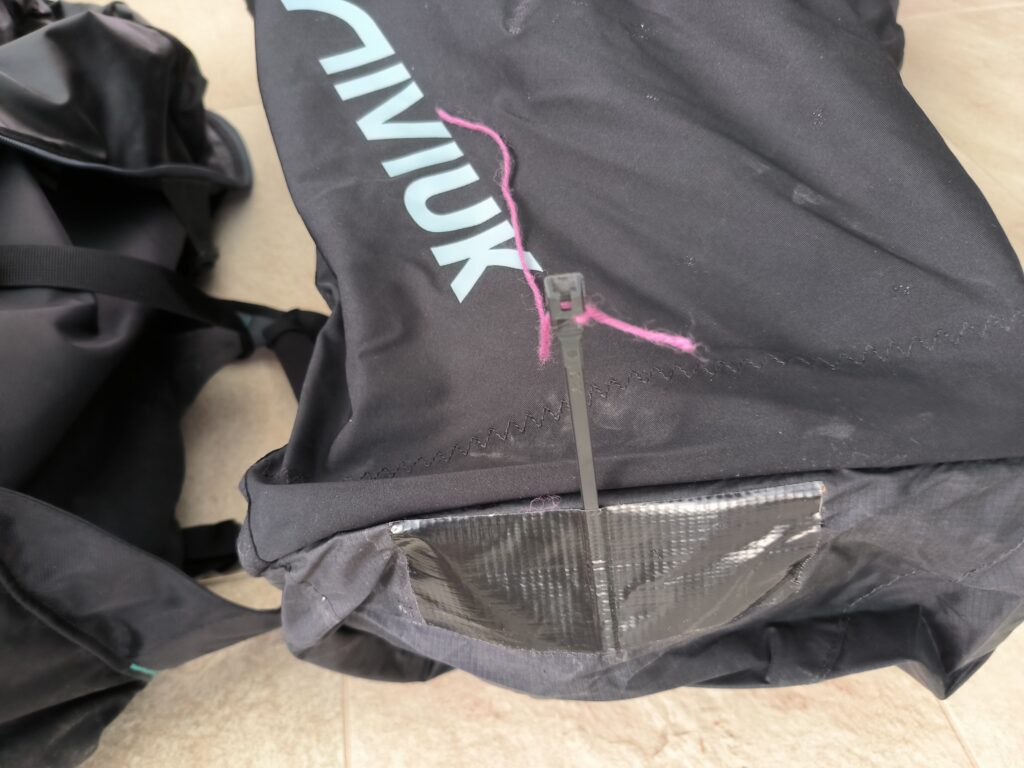
1st aid toiletry bag
Who among us hasn’t had to witness an aviation accident? Fortunately, I haven’t had to provide first aid yet, either because it wasn’t necessary or because others have already helped. Nevertheless, I would like to be prepared in the event of an emergency, for example after a tree landing. For this purpose, I bought a small red toiletry bag, which is normally used for bathing utensils, and filled it with everything I need for first aid. For me, this includes a cord, carabiner, sling, rescue cord, plasters, gauze bandage, tape, headache tablets, water purification tablets, respiratory mask, gloves, rescue blanket, paper handkerchiefs, belt cutter and open-end spanner to open the line locks. Of course, the first aid kit should be within reach from the cockpit, which is important in the event of a tree landing.
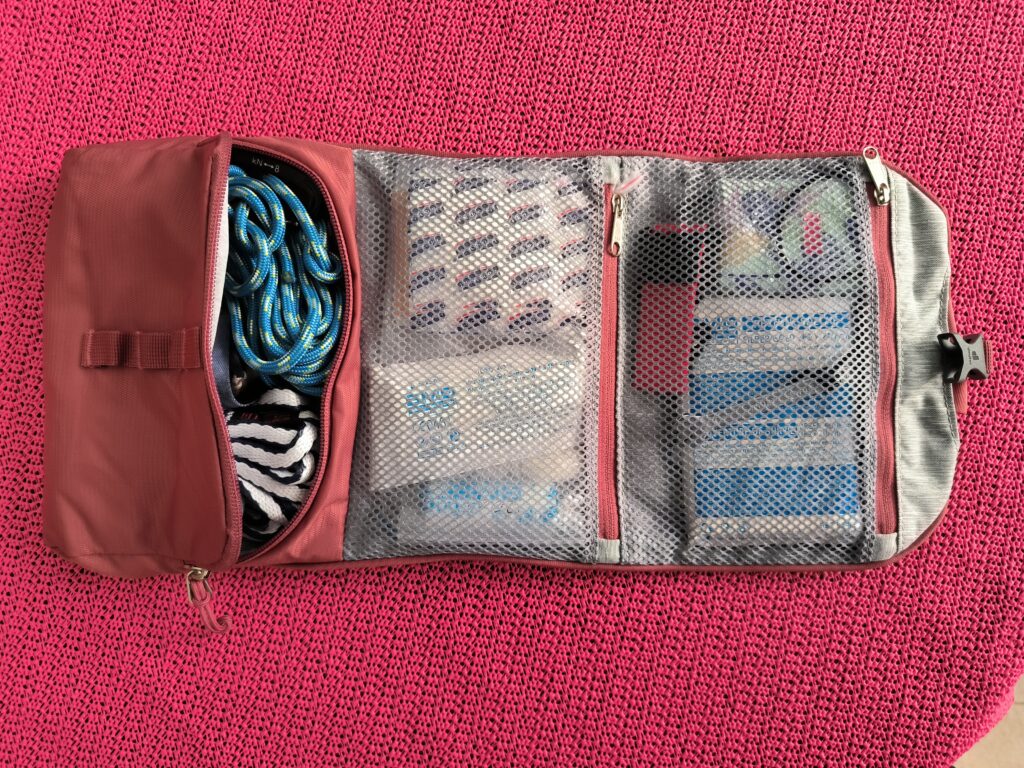
USB-C cable with fabric strap
Nowadays, you carry a lot of electronics with you in flight that are powered by a power bank, as the integrated battery does not have the capacity to supply the device with energy for the entire duration of the flight. Examples of this are action cams and smartphones. As harnesses tend to be a little more robust, it is advisable to use a USB-C cable with a nylon sheath instead of the usual plastic sheath. These are more robust and much better suited to the rigours of everyday flying.
